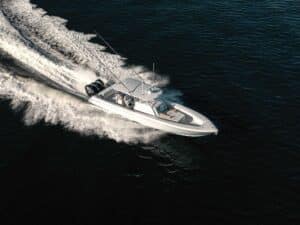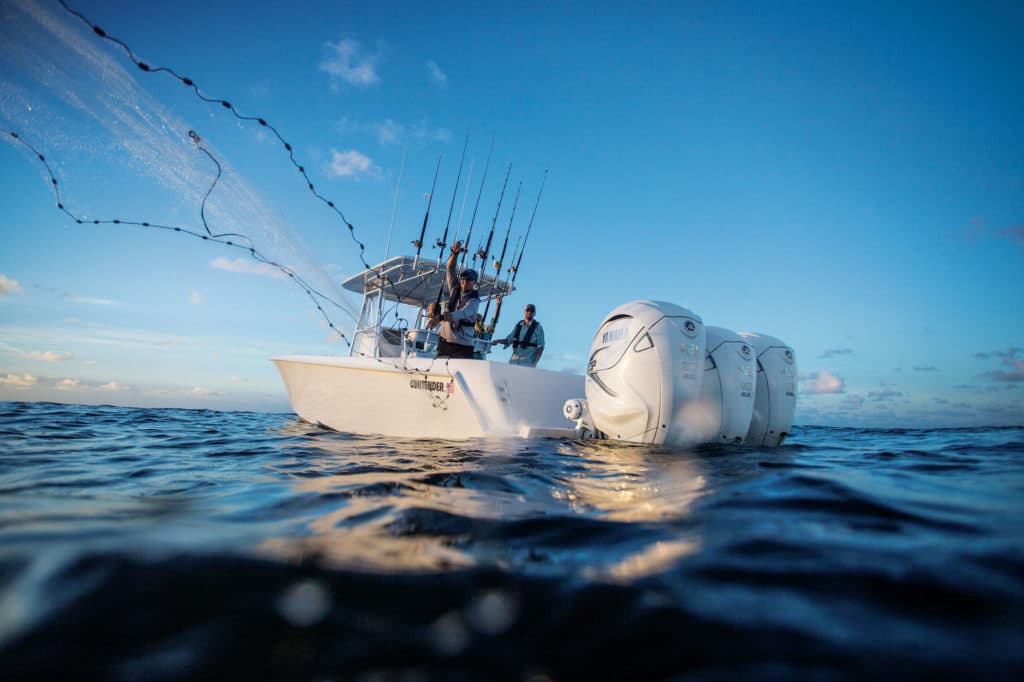
We see the change. New outboard engines literally look different: more-angular shapes, removable cowling sections, coordinated color combinations — and just plain bigger.
Engine builders reshaped the insides too. They’ve included innovative technologies — electric steering, contra-rotating props, performance customization — that are ever-so-finely tuned by repetitive, robust computer simulations.
Can we say, “The future is here”? Can we say, “These aren’t your father’s outboards”?
I believe so. At least we can say that we’ve turned a page.
In addition to cutting-edge engineering and design changes, motor-makers pointed to an even newer twist: the concept of bringing the engines “into the boat.” While that phrase initially might jar you, realize that they’re talking about incorporating outboards — particularly that exponentially growing segment of higher-horsepower models — into the boat’s systems.
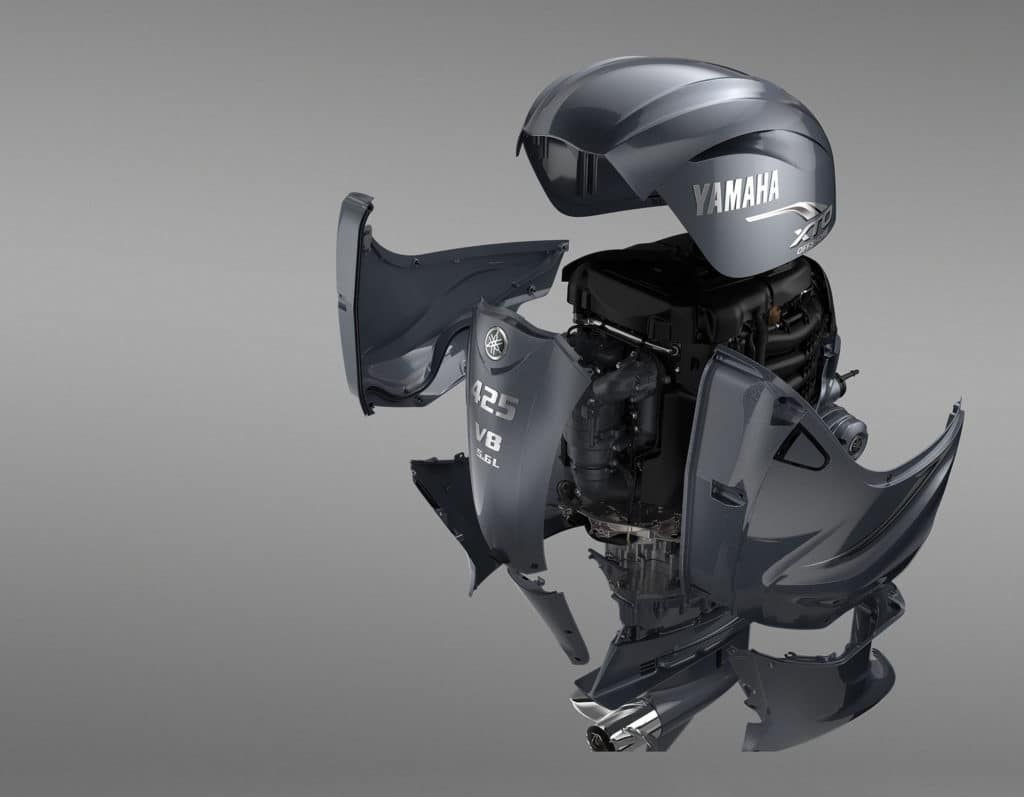
Yamaha Outboards
“The 425 XTO is not completely outboard in the normal sense of the word,” David Meeler quips to me during my recent phone call to the Yamaha product planning and information manager. On the other end of the line, I mentally stammer. But he continues: “A lot of it has to do with what’s going on inside the boat. The XTO is a propulsion system rather than just an engine — it’s charging, steering and control systems all in concert that’s moving the benefit of that engine on the transom into the boat.”
OK, we really are talking about a transition from previous generations, when we considered outboards as mere but necessary add-ons. He’s saying that recreational boats, like cars and inboard vessels, now come more as a completely thought-out and integrated package, even including navigation electronics. Yes, in some cases, you can still opt for one of several brands on your transom, but more and more often, we see the bundle approach.
“It’s the combination of the different systems used on these engines creating tangible benefits,” he says, sharpening that fine point.
Sure, Meeler can talk about Yamaha-specific technology, particularly the new innovations on the 5.6L V-8 425 XTO, the company’s flagship outboard that was first seen by the public this February at the Miami Boat Show. The XTO features direct fuel injection — the first-ever use of that technology in a four-stroke outboard. “That atomizes the fuel very finely to give you more-complete combustion, and better fuel efficiency,” he says. “But DI also cools the top of the piston crown. What that’s going to do is give you resistance to detonation, crank up the compression — that’s where your power and torque come from. And it does it with only 89-octane gas.”
The XTO also features an electric-steering motor that delivers a quick response, and 72 net charging amps at 1,500 rpm with 90-plus amps of total availability. “That’s going to allow people to have more of an electric load on the boat,” Meeler says.
While most of this cutting-edge innovation exists only on the 425 for now, it most likely will eventually trickle down — as other technologies have in the past. Yamaha’s shift-dampener system, for instance, is now available on engines as small as 50 hp.
Yamaha effected something of a new look with the 425 due to the multipiece cowling the company used to facilitate maintenance. The 300, 350 and 425 hp Yamahas come in white or gray; the 425 also comes in a primer version, allowing for custom paint jobs.
“Beauty is in the eye of the beholder,” he says. The XTO look “is both elegant and aggressive, but with an element of functionality. We all have to drain water, protect the powerhead and resist corrosion.”
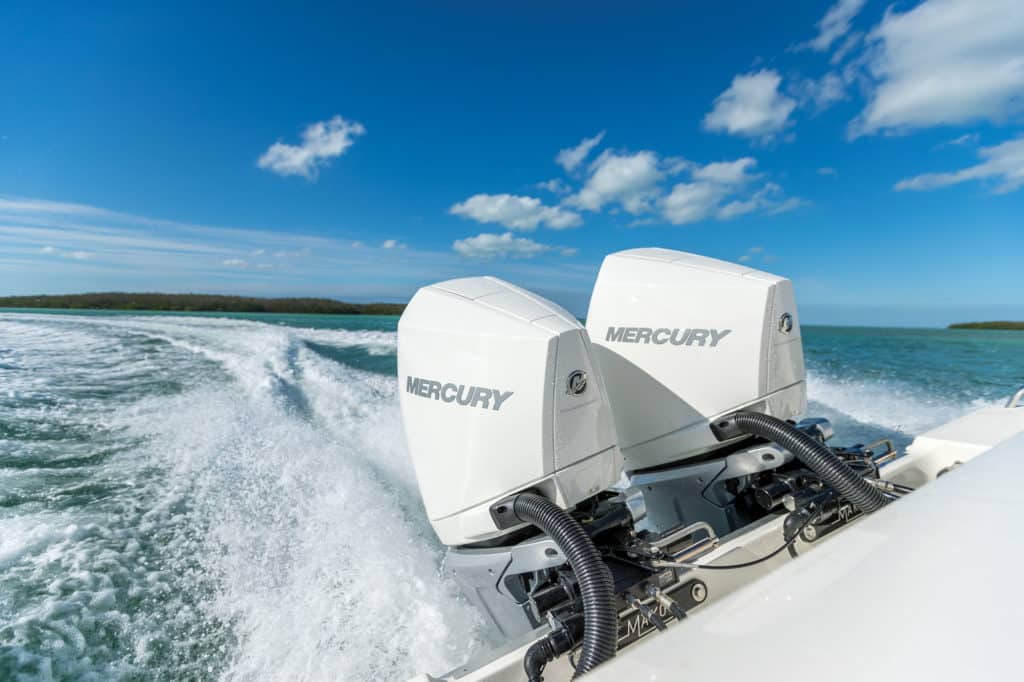
Mercury Marine
Last spring, Mercury rolled out 14 new outboard engines with a sweeping tribute to both new technology and aesthetic design. And while such an event represents a showstopper, it’s likely Mercury spent years in development before this project made it to the water. I asked about that process and about how Mercury delivers on the main three consumer concerns: fuel economy, light weight and torque.
“All three of those are intermingled significantly and are mostly defined in the first months of a new-product development,” says Tim Reid, Mercury vice president of product development and engineering. “On our V-6 and V-8 platforms, light weight was a major driver. How we hit those targets required detailed design analysis in the computer. We went through detailed reviews, pulling out grams where they’re not needed.”
Reid says Mercury’s patented low-copper aluminum alloys are designed specifically for marine use due to their excellent corrosion resistance. “It’s a challenge. Copper helps for strength and helps in the casting process. We learned a long time ago how to take out copper but retain high strength,” he says.
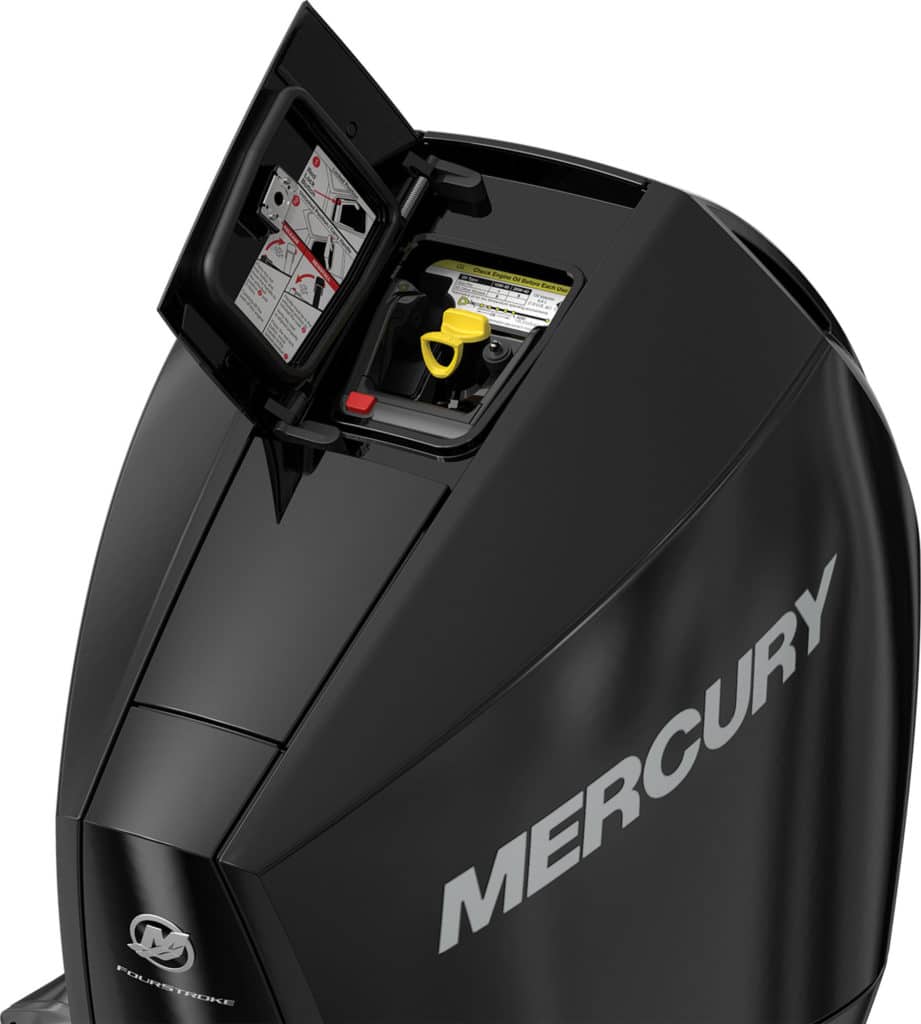
To maximize fuel economy on the V-6 and V-8 motors, Mercury ran 50 different combustion chambers and fuel-injection systems through computer testing before deciding on the final three, which were incorporated into test engines to select the production design. The company employs lean-burn technology, using an oxygen sensor to detect the air-to-fuel ratio. As the engine starts to sense that the boat is at cruising speed, it leans itself out.
Combine that with advanced hydrodynamics for the gear case and prop, and in-depth analysis of friction surrounding the crankshaft, and you’re moving toward optimization.
Reducing friction increases prop torque. “Roughly 7 percent of engine power is lost in your gear case,” Reid says. Gaining that back on the order of even 1 to 2 percent is a tall order. “Our goal is to optimize every part along the way.”
Mercury’s new V-6 and V-8 outboards look quite different from older models; they also feature a new service door on top of the cowling for easy maintenance. On the V-6 and the V-8 FourStrokes and Verados, the company debuted new customizing colors panels.
“We’re visually expressing our brand. The brand is really about ‘Go boldly.’ I think our design expresses that,” says Todd Dannenberg, Mercury’s director of industrial design. “Designs should not be comfortable to everybody that first year. You strike a chord with early adopters, and that creates a kind of desire. The key is the right amount of restraint.”
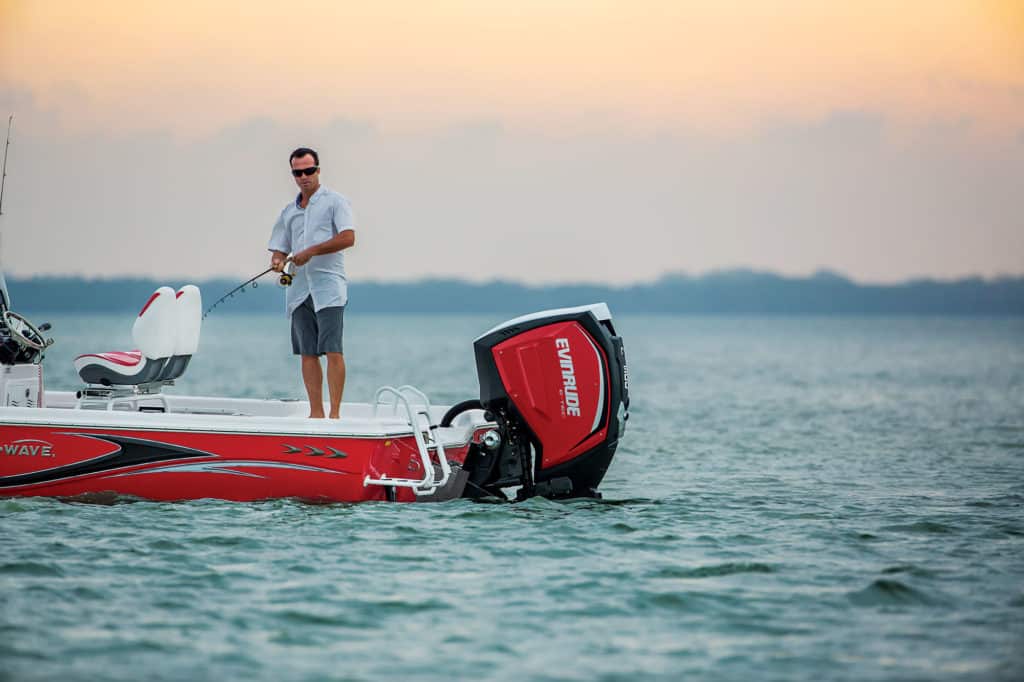
Evinrude
Evinrude has certainly heard all of the arguments against two strokes, as well as those against digitization and computerization. In the face of that, the company set out to completely revolutionize two-stroke technology. And that’s exactly what they have done.
Now, as engines and boats become more and more electronically controlled, Evinrude seeks to dash myths about reliability. “Digital things don’t wear out,” says Nando Zucchi, vice president of marketing and international development. “They bring in a level of durability that mechanical things don’t have.
“That’s the future. I think we went there a little harder and faster with the G2.”
Evinrude’s E-TEC G2, which first made an appearance in 2014, represented dramatic changes in both exterior design and internal workings for two-stroke outboards, even compared with the company’s original E-TEC. G2s feature integrated power steering and an oil reservoir inside the cowling. They also come with iTrim, a system that automatically trims the outboard based on load and rpm, and with customizable color panels for matching the engine and the hull — at the time, an industry first. But Evinrude didn’t stop there.
“You’ve got a sport, an eco and a touring mode on cars, right?” Zucchi asks. “We can dramatically tune the engine performance with the boat-maker to make sure it’s dialed to work for that particular boat. We can do custom mapping [of the engine control module, or ECM].”
The “brains” of the outboard reside inside the ECM. “Also, we’re now doing a better job of integrating the outboard into the helm with the control panel and controls,” he says. “It really takes into account the total experience.”
The industry is going that direction, Zucchi asserts. For instance, Evinrude plans to have a glass-dash prototype, working with Navico (which owns Simrad and Lowrance brands). Zucchi also predicts ever-higher horsepower outboards, and a continued emphasis on cutting-edge design.
The G2s broke the round-cowling mold. “For a long time, the outboard was this thing that sticks on the back of the boat. It looks like an afterthought. We decided, ‘Hey, let’s make this something people can customize,’” he says, acknowledging that not everyone appreciates the new look. “I think anytime you have a polarizing design, it’s not necessarily a bad thing. It’s making a statement, and it stands for something.”
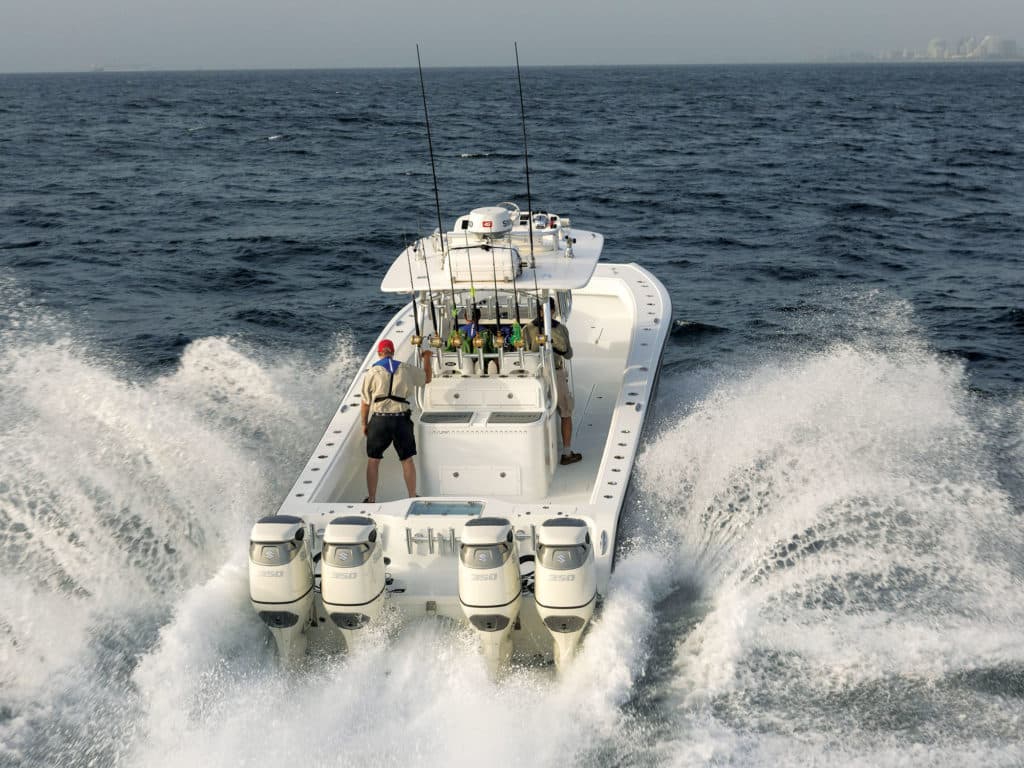
Suzuki Marine
Suzuki made a splash in 2017 with its V-6 350 hp outboard, sporting a contra-rotating-prop configuration — one three-blade prop ahead of a second on the shaft. “You get better grip underwater, boat stability and tracking, and it eliminates the need for a dedicated counter-rotating propeller/lower unit [in a twin-outboard configuration],” says David Greenwood, Suzuki product planning manager.
Greenwood adds that the six blades allowed Suzuki to generate higher-efficiency thrust from a lighter 350 hp V-6. More blade surface in the water greatly reduced prop slip and provided as much as 300 percent more reverse thrust.
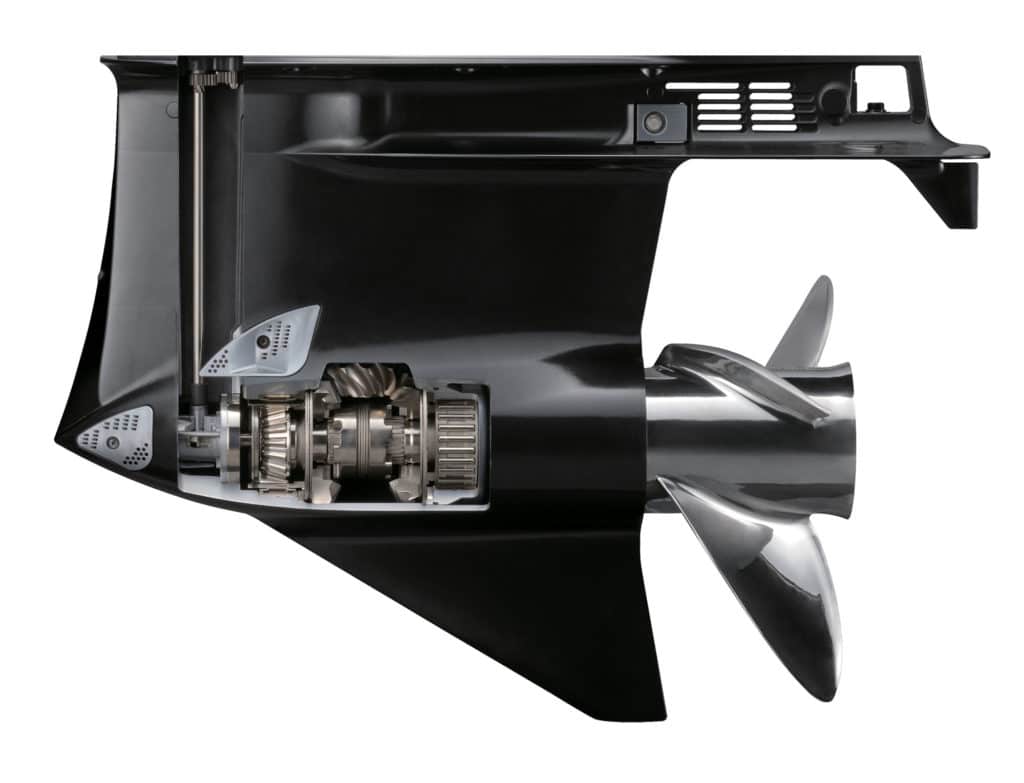
Suzuki also has refined its lean-burn technology to improve fuel economy, using an oxygen sensor to better monitor the mix. The 350 employs dual fuel injectors per cylinder to introduce two fine sprays, resulting in improved atomization.
Making good, clean power relies on bringing in the correct amount of air, Greenwood says. Suzuki accomplishes that on the 350 by using a semi-direct, dual-louver air-intake system. The first set of louvers eliminates water droplets so they fall out of suspension. “The second set catches any remaining fine mist of water. It is so efficient: Fresh air comes into the throttle body no more than 10 degrees hotter than the ambient air,” he explains, adding that the 350 sports dual water intakes as well. “The cooler the fresh air, the higher the density of the air, the more power you’re going to create.”
Color matters too: “We’ve found that our white engines run 25 degrees cooler than black engines in the hot, harsh environments of the South.”
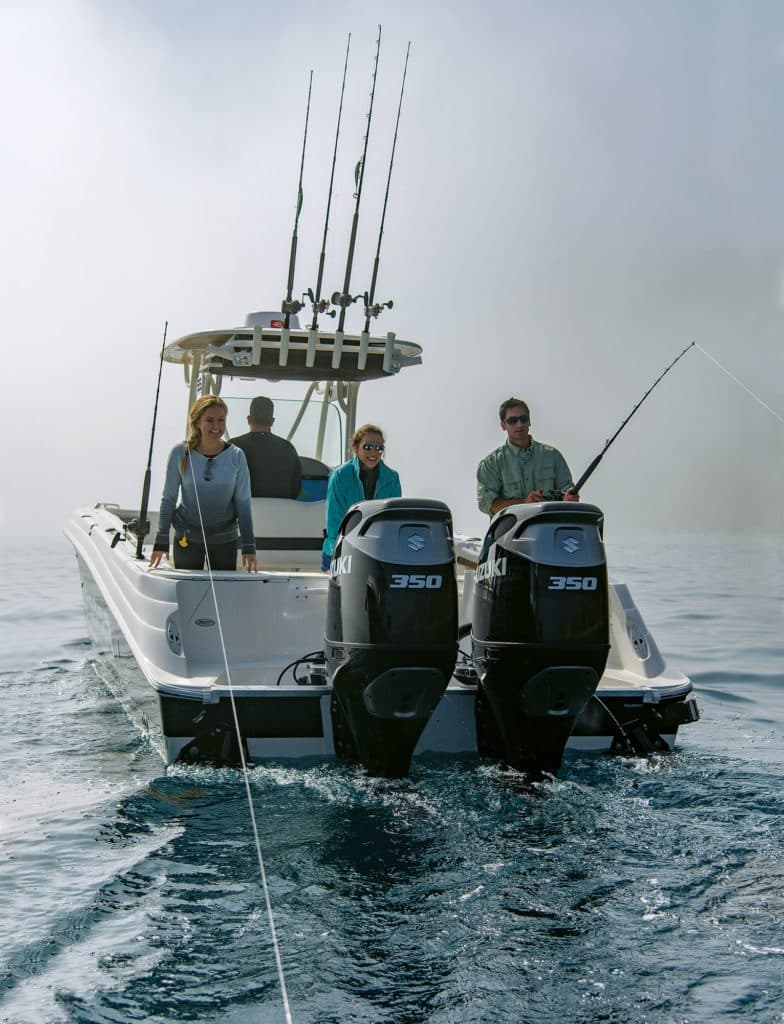
While much of the newest technology comes in at the highest-horsepower levels, where cost is relative, Suzuki hopes to introduce its latest innovations to smaller and smaller outboards. On the 150 and up, for instance, Suzuki now offers its Select Rotation, which means dealers can simply program the engine to make it left- or right-handed, improving inventory control and increasing the trade-in value of the outboard, Greenwood says.
As demand for onboard digital switching grows, Suzuki has answered with its new multifunction display, which premiered in late 2018. “It’s all going digital,” Greenwood confirms.
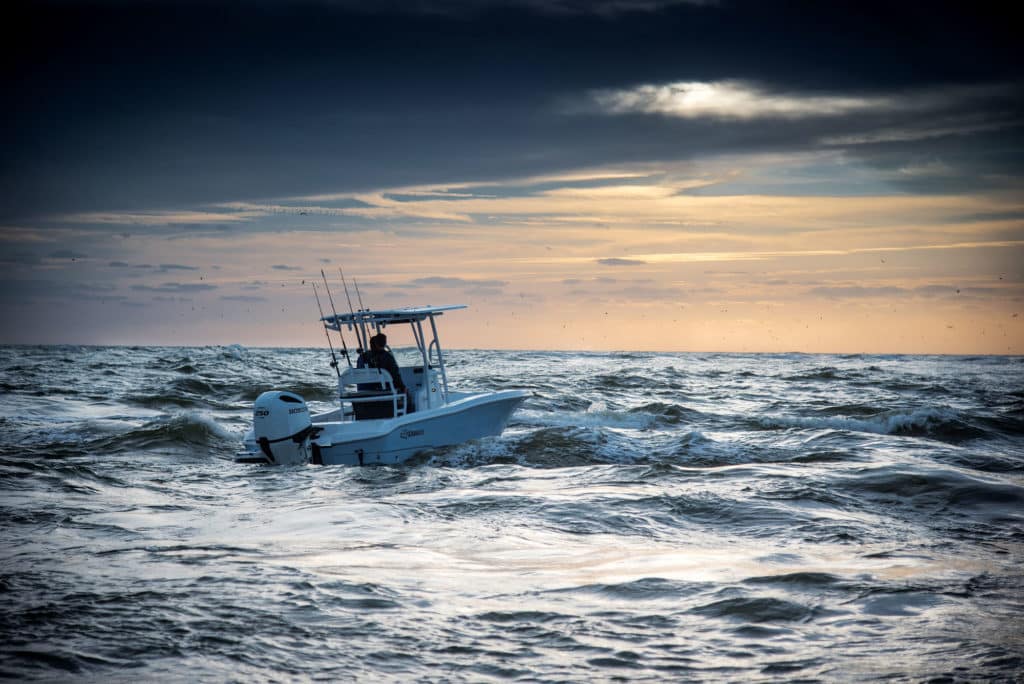
Honda Marine
“What we’re trying to do is enhance the experience of the boater on the water. Specifically, the joy of owning a product,” says Michael Rickey, senior manager for Honda Marine. That philosophy extends from the colors of the engines to their longevity, as well maintenance improvements and new offerings for the company’s larger motors.
In fact, the BF200 and BF225 outboards now employ the same 3.6L engine as the larger BF250. Honda has also redesigned all three V-6 engines for 2019 to include what the company calls a sleek Progressive V Form.
Miami Boat Show attendees might recall seeing a wildly creative blue, red and black concept design with a floating-winged blade during the 2017 event. But what Honda delivered in 2018 tamed that look yet still offered swept angles and an aggressive intake.
“When you’re spending a lot of money on a boat, you want fit, form and function, but you also want design,” Rickey says, adding that the mechanical versions of the BF200/225/250 were available at press time with the company’s iST (electronic shift and throttle) models due later this year. Rigging options for iST outboards now include a one-push-button start and theft-deterring immobilizer for security.
Honda also received a lot of requests for white outboards, which is now a color option on engines from 115 to 250 hp. “They weather better. In warmer, saltier climates, silver can take a beating,” he says.
Read Next: Outboard Engine Evolution — from Portable to Digital
Technical improvements include an enhanced number of sacrificial anodes, amped-up corrosion resistance of bolts and fasteners, and a redesigned hood-sealing system for even less water intrusion. The Progressive V Form cowling features a dual-channel, indirect-air-circuit induction system to improve airflow and funnel away moisture. And a larger-diameter dipstick tube, integration of a water separator and fuel strainer, and relocation of the high-pressure fuel filter have dramatically reduced select maintenance times.
Whether you regard all of these outboard changes as evolution or revolution surely depends upon your experience and perspective. Some of us resist technology, while others embrace the excitement of new wizardry.
Outboard and boat companies want to make things less confusing; their aim is to make things easier on the average angler. “We’re using the technology to take the fear out of operating that vessel, using it to make things simple,” Yamaha’s Meeler says. “If you use technology wisely, you take the complexity out.”




